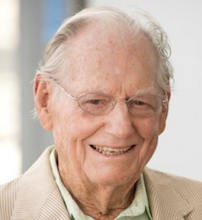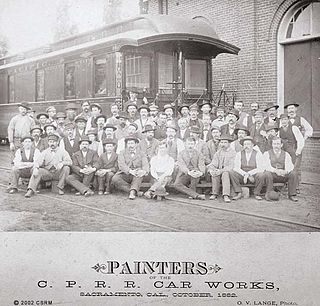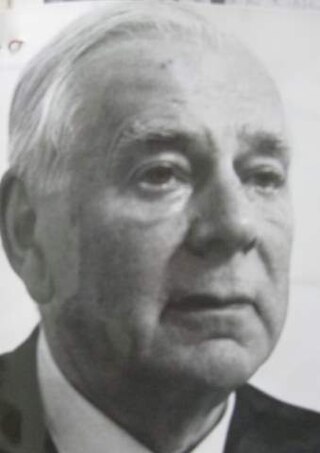
Morton Wayne Thiebaud was an American painter known for his colorful works depicting commonplace objects—pies, lipsticks, paint cans, ice cream cones, pastries, and hot dogs—as well as for his landscapes and figure paintings. Thiebaud is associated with the pop art movement because of his interest in objects of mass culture, although his early works, executed during the fifties and sixties, slightly predate the works of the classic pop artists. Thiebaud used heavy pigment and exaggerated colors to depict his subjects, and the well-defined shadows characteristic of advertisements are almost always included in his work.

Luminism is an American landscape painting style of the 1850s to 1870s, characterized by effects of light in landscape, through the use of aerial perspective and the concealment of visible brushstrokes. Luminist landscapes emphasize tranquility, and often depict calm, reflective water and a soft, hazy sky. Artists who were most central to the development of the luminist style include Fitz Hugh Lane, Martin Johnson Heade, Sanford Gifford, and John F. Kensett. Painters with a less clear affiliation include Frederic Edwin Church, Jasper Cropsey, Albert Bierstadt, Worthington Whittredge, Raymond Dabb Yelland, Alfred Thompson Bricher, James Augustus Suydam, and David Johnson. Some precursor artists are George Harvey and Robert Salmon. Joseph Rusling Meeker also worked in the style.

Xavier Timoteo Martínez was a California artist active in the late 19th and early 20th century. He was a well-known bohemian figure in San Francisco, the East Bay, and the Monterey Peninsula and one of the co-founders of two California artists' organizations and an art gallery. He painted in a tonalist style and also produced monotypes, etchings, and silverpoint.

Arthur F. Mathews was an American Tonalist painter who was one of the founders of the American Arts and Crafts Movement. Trained as an architect and artist, he and his wife Lucia Kleinhans Mathews had a significant effect on the evolution of Californian art in the late 19th and early 20th centuries. His students include Granville Redmond, Xavier Martinez, Armin Hansen, Percy Gray, Gottardo Piazzoni, Ralph Stackpole, Mary Colter, Maynard Dixon, Rinaldo Cuneo and Francis McComas.

The Crocker Art Museum is the oldest art museum in the Western United States, located in Sacramento, California. Founded in 1885, the museum holds one of the premier collections of Californian art. The collection includes American works dating from the Gold Rush to the present, European paintings and master drawings, one of the largest international ceramics collections in the U.S., and collections of Asian, African, and Oceanic art. The Crocker Art Museum has been accredited by the American Alliance of Museums, a high standard for US museums.

Thomas Hill was an American artist of the 19th century. He produced many fine paintings of the Californian landscape, in particular of the Yosemite Valley, as well as the White Mountains of New Hampshire.

Oscar Victor Lange (1853–1913) was a leading photographer and occasional landscape painter in the San Francisco Bay Area of California during the late 19th century. His work is typically credited as "O.V. Lange".

Jules Tavernier was a French painter, illustrator, and member of Hawaii’s Volcano School.
James Edward Grant was an American painter and sculptor active from the late 1950s into the early 1970s. Best known for his sculptural work in plastics, this work by no means defined him but was rather a natural endpoint of an exploration into increased dimensionality—starting from abstract canvases, moving through collages and bas-reliefs until the work finally came off the wall in sculptural form.

Chiura Obata was a well-known Japanese-American artist and popular art teacher. A self-described "roughneck", Obata went to the United States in 1903, at age 17. After initially working as an illustrator and commercial decorator, he had a successful career as a painter, following a 1927 summer spent in the Sierra Nevada, and was a faculty member in the Art Department at the University of California, Berkeley, from 1932 to 1954, interrupted by World War II, when he spent a year in an internment camp. He nevertheless emerged as a leading figure in the Northern California art scene and as an influential educator, teaching at the University of California, Berkeley, for nearly twenty years and acting as founding director of the art school at the Topaz internment camp. After his retirement, he continued to paint and to lead group tours to Japan to see gardens and art.

Hermann Rosse was a Dutch-American architect, illustrator, painter, theatrical designer, and art director. He won an Academy Award for Best Art Direction for the film the King of Jazz.

William Keith was a Scottish-American painter famous for his California landscapes. He is associated with Tonalism and the American Barbizon school. Although most of his career was spent in California, he started out in New York, made two extended study trips to Europe, and had a studio in Boston in 1871–72 and one in New York in 1880.

William Seltzer Rice was an American woodblock print artist, art educator and author, associated with the Arts and Crafts movement in Northern California.
Roland Conrad Petersen is a Danish-born American painter, printmaker, and professor. His career spans over 50 years, primarily in the San Francisco Bay Area and is perhaps best-known for his "Picnic series" beginning in 1959 to today. He is part of the Bay Area Figurative Movement.

Annie Lyle Harmon was a Californian plein-air artist known especially for her paintings of trees. A student of leading landscape artist William Keith (1838–1911), Harmon, along with several other artists, was a fixture in Keith's studio for many years.

Edwin Deakin was a British-American artist best known for his romantic landscapes as well as his architectural studies, especially the Spanish colonial missions of California. His still lifes are considered to be some of the finest of the genre. Deakin is one of the artists who popularized scenes of San Francisco's Chinatown. His sensitive and highly publicized depictions of the deteriorating missions drew public attention to the necessity of restoring these historically important monuments.

Mary Evelyn McCormick was an American Impressionist who lived and worked around San Francisco and Monterey, California at the turn of the 20th century.
Jacques Schnier (1898–1988) was a Romanian-born American artist, sculptor, author, educator, and engineer. He was a sculpture professor at the University of California, Berkeley from 1936 to 1966.
Harry Stuart Fonda was an American painter, musician, and professor, best known for his marine and landscape paintings.
Frank Raymond LaPena, also known as Frank LaPeña and by his Wintu name Tauhindauli, was a Nomtipom-Wintu American Indian painter, printmaker, ethnographer, professor, ceremonial dancer, poet, and writer. He taught at California State University, Sacramento, between 1975 and 2002. LaPena helped defined a generation of Native artists in a revival movement to share their experiences, traditions, culture, and ancestry.















